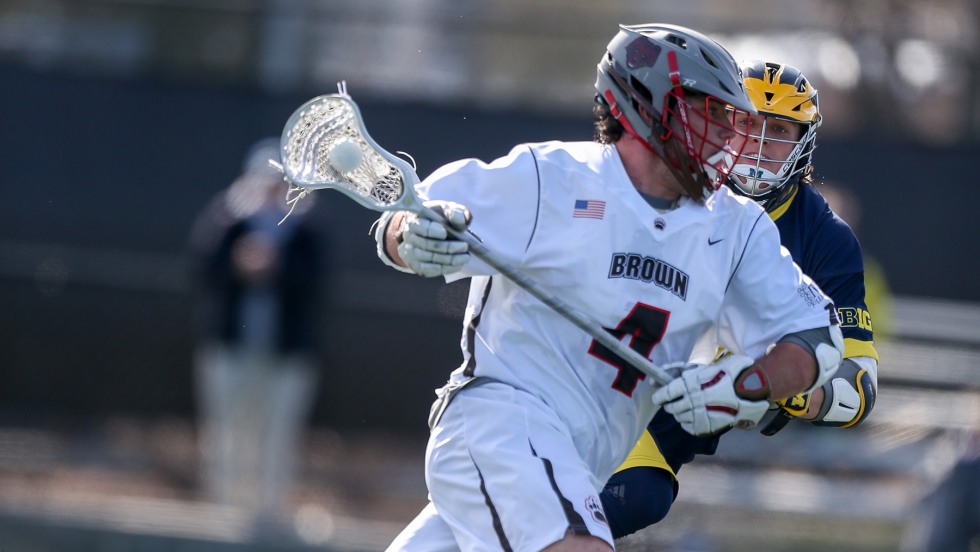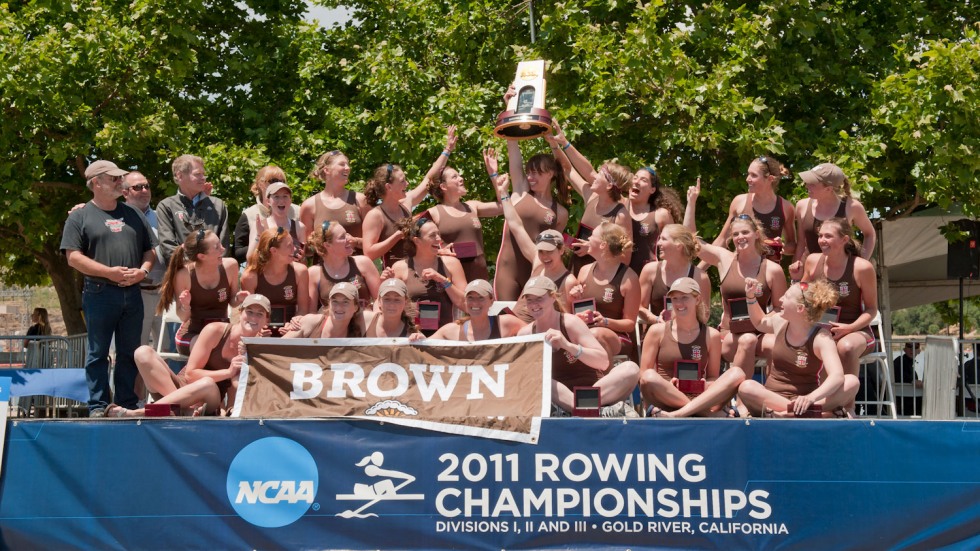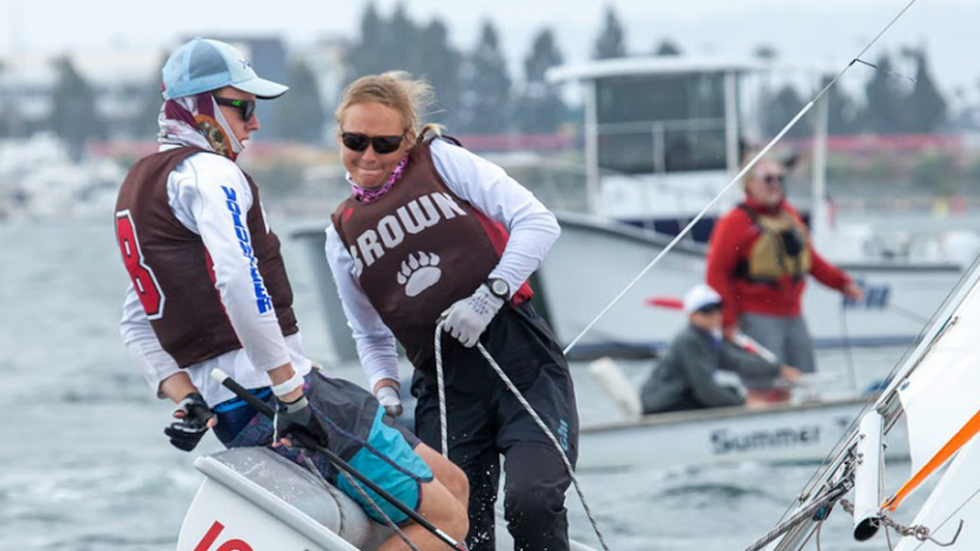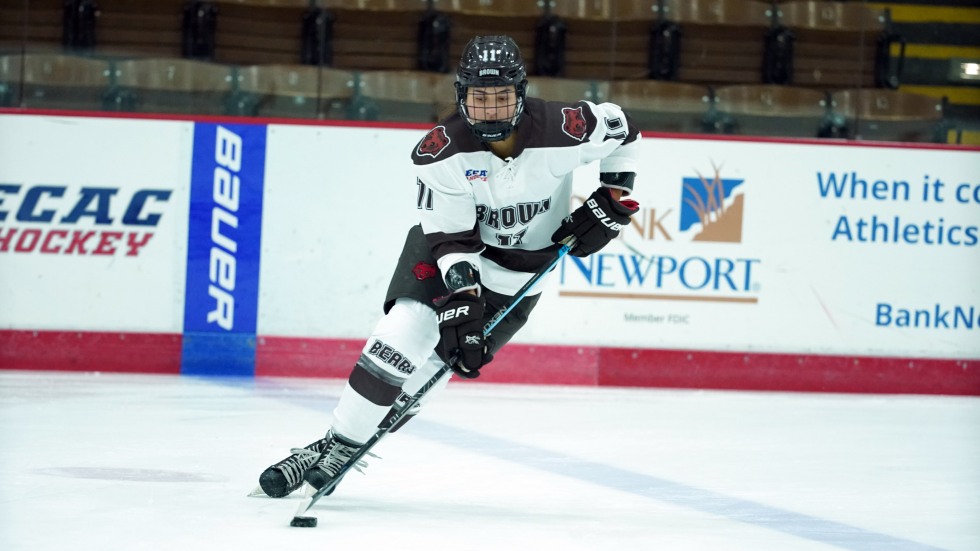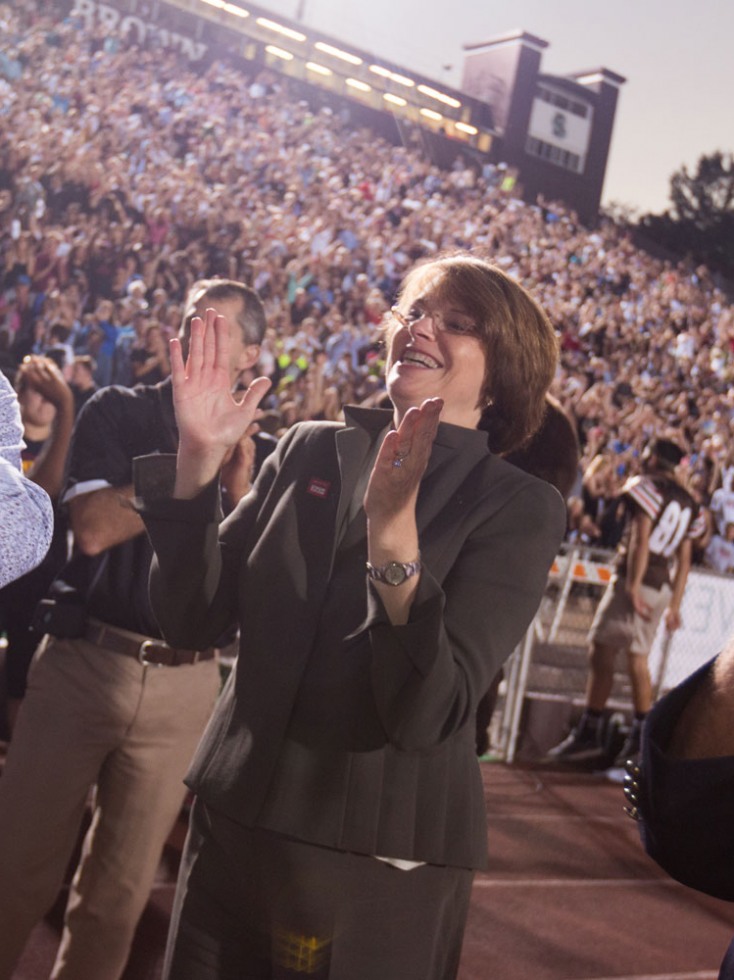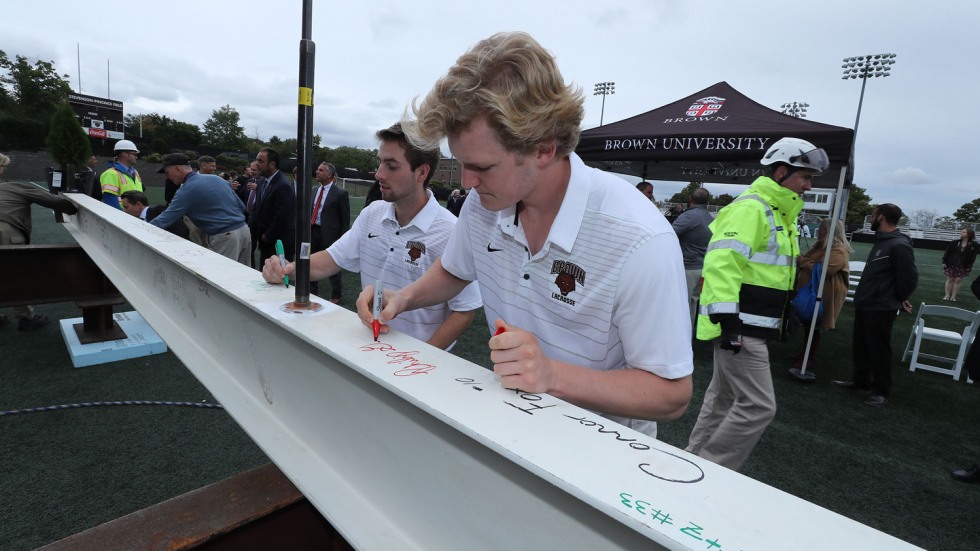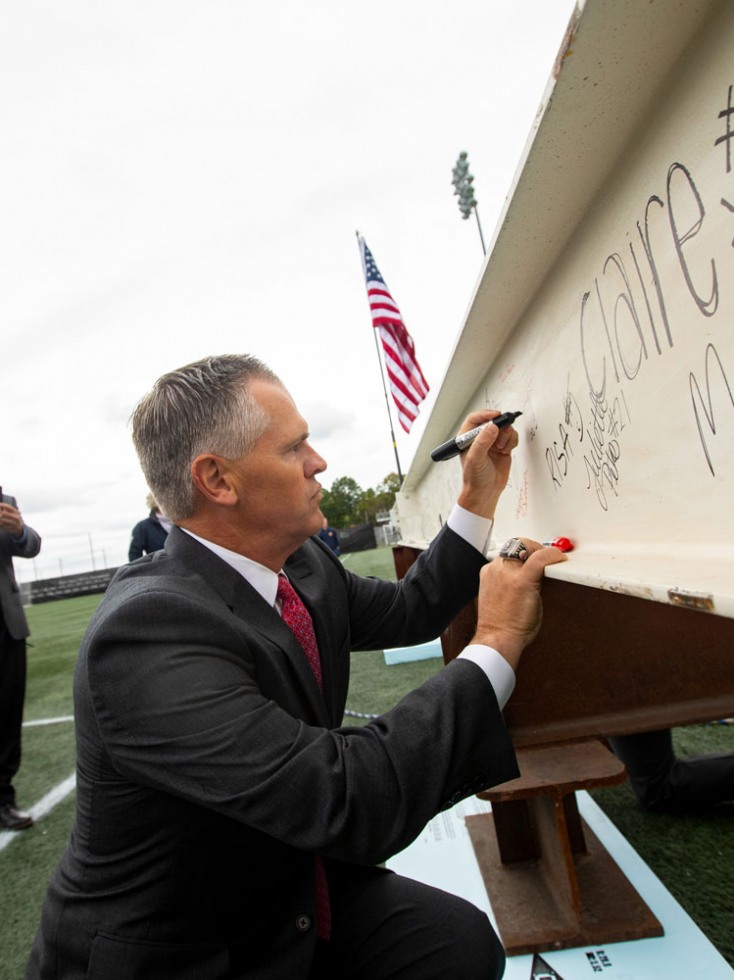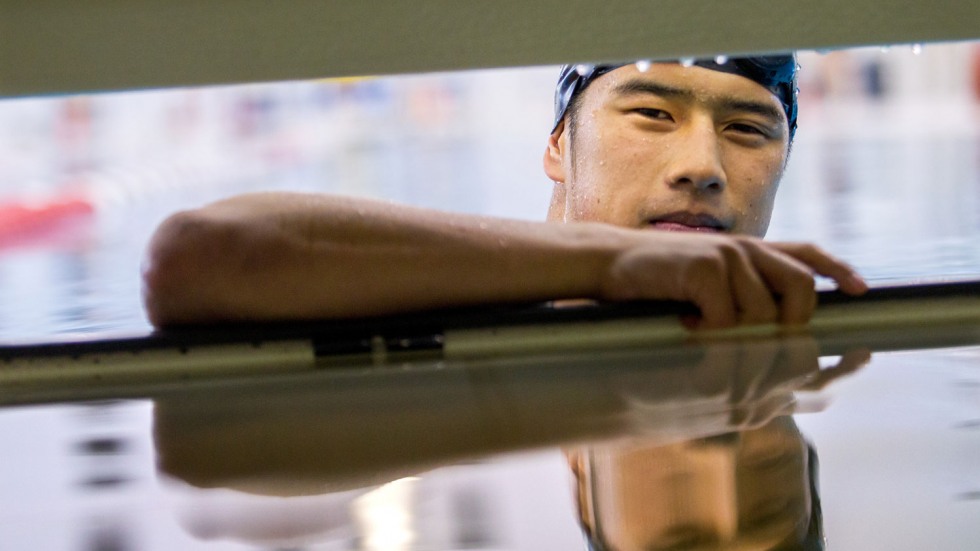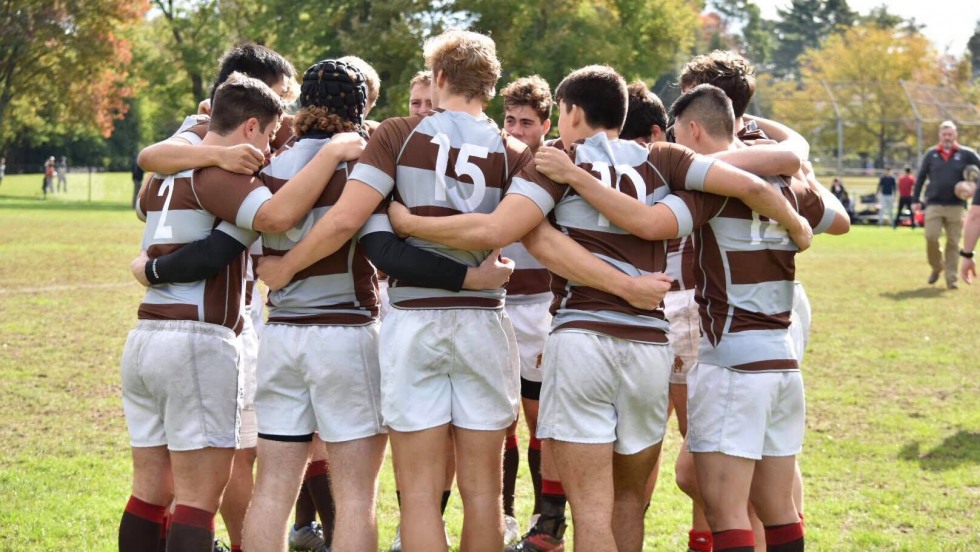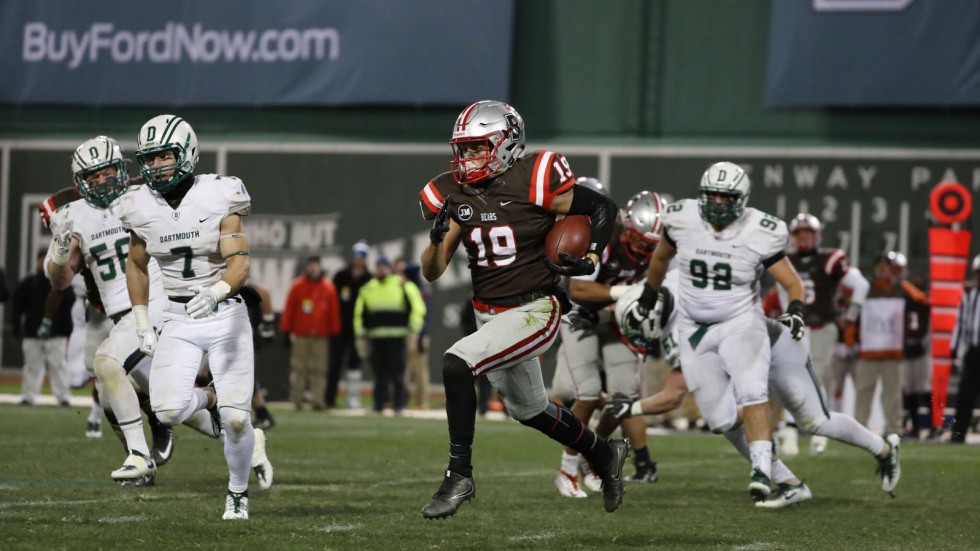PROVIDENCE, R.I. [Brown University] — With the goals of improving the competitiveness of varsity athletics teams, enhancing the strength of club sports and upholding its commitment to providing equal opportunities in athletics for women and men, Brown University has launched a bold plan to reshape its athletics program.
The Excellence in Brown Athletics Initiative will revise the University’s roster of varsity sports teams; enhance club sports teams and add several new ones; focus on recruitment of outstanding student-athletes and on maintaining roster sizes that build competitiveness; advance coaching, training and conditioning resources; and continue improvements to athletic facilities.
University President Christina H. Paxson outlined the new initiative in a May 28 letter to the Brown community. She said that Brown’s vision is to advance the ideal of the scholar-athlete — “the bright and passionate student who embraces excellence both in academics and also in their sport.”
“We envision varsity athletes who, as Brown students, are among the most academically talented in the world, who also compete on teams that are among the most competitive among our peers,” Paxson said. “And we have a vision for club sports that offer competitive athletic opportunities to a wide array of students, while also supporting health and well-being. The Excellence in Brown Athletics Initiative is a bold plan to reshape athletics for our student-athletes and to achieve that vision.”
